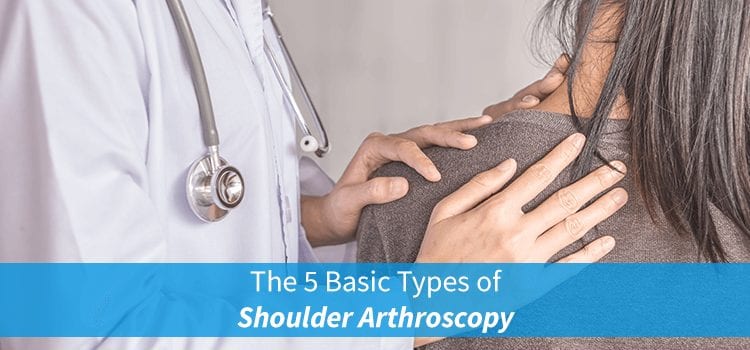Shoulder problems can limit you from participating in the activities you love the most. In addition, shoulder pain can affect your job performance, making simple tasks—like lifting a bag of groceries—painful.
While some people who deal with shoulder pain benefit from conservative treatments, like resting the area or physical therapy, others may require more extensive forms of treatment.
In particular, arthroscopic shoulder surgery has helped many people who suffer from shoulder problems find relief. This minimally invasive procedure is a lot less damaging than open surgery, and as such, usually results in a quicker recovery time.
So what is arthroscopy? And, what are some of the shoulder conditions that this procedure helps? Use this guide to understand the shoulder joint, its typical injuries, and how shoulder arthroscopy can help you!
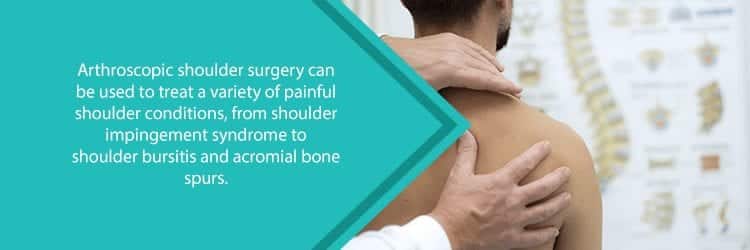
Understanding the Shoulder Joint
We often don’t understand how much our shoulders do for us until we injure one. After all, our shoulder joints allow for more motion than any other joints in our body. To fully understand shoulder problems, first, you need to know what makes the shoulder such a complex joint.
A joint is an area where two bones are attached by connective tissue and cartilage. These soft tissues, which hold the bones together, also allow for functional movements—like lifting that bag of groceries.
The shoulder joint is where the top of your upper arm bone (humerus) fits into the rounded socket of your shoulder blade (scapula). This type of joint is known as a ball-and-socket joint. Specifically, the ball of the humerus slides around the smooth socket of the scapula.
These bones are bound together by a complex system of soft tissues, including the following structures:
- Labrum: Fibrous cartilage that forms a gasket around the socket to cushion the shoulder joint and add stability.
- Shoulder Capsule: Ligaments that hold the joint together. This includes a thin membrane known as the synovium, which makes fluid to help lubricate the joint.
- Rotator Cuff: A group of four tendons that surround the shoulder capsule and keep your humerus centered and stable. This cuff covers the top of the humerus and attaches it to the shoulder blade.
- Bursa: A small sac between the rotator cuff and a small bone on top of your shoulder known as the acromion. This sac produces fluid to lubricate the rotator cuff tendons during arm movements.
When any of these areas become injured, pain and inflammation can occur. In some more severe cases, an arthroscopy may be suggested by your doctor or orthopedic surgeon to diagnose and repair the problem.
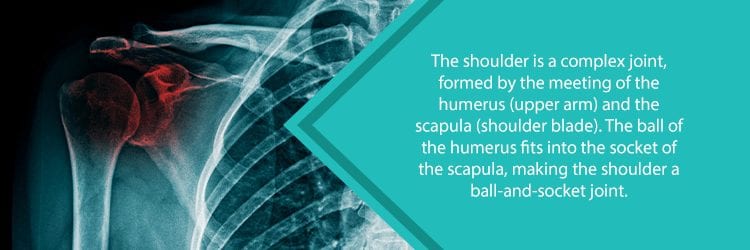
What is a Shoulder Arthroscopy?
An arthroscopy is a minimally invasive surgery that helps a doctor view, diagnose, and treat various problems that affect a joint. During an arthroscopy, a tiny camera, known as an arthroscope, displays images on a nearby television screen. These images help guide the orthopedic surgeon as he or she uses tiny surgical instruments to repair the damage.
Shoulder Arthroscopy vs. Open Shoulder Surgery
An arthroscopy is much less invasive than open shoulder surgery. Since the equipment used during the operation is miniature, your surgeon can perform the entire procedure through the use of a tiny incision. Due to this smaller incision, patients generally experience less pain after the surgery as well as faster recovery times. In addition, your physician can usually perform these types of surgeries on an outpatient basis. This means that, in most cases, you’ll get to go home the same day as your procedure.
Shoulder Problems & How Shoulder Arthroscopy Can Help
Your shoulder joint performs many movements during your daily activities. These movements, as well as other factors like certain health conditions, make the shoulder more prone to injury. Here are some common shoulder problems that your surgeon can use an arthroscopy to correct.
Shoulder Impingement Syndrome
This is a common shoulder injury that affects the tendons of your rotator cuff. It occurs when your tendons become compressed or trapped during movement. Many athletes who use their arms for overhead movements such as swimming, tennis, and baseball are vulnerable to this type of injury. In addition, those who work in jobs that require repetitive lifting like construction may also develop this condition.
Sometimes referred to as rotator cuff tendinitis, the symptoms of a rotator cuff tear include shoulder pain that radiates to the side of the arm or sudden pain while lifting or reaching. In more severe cases, this condition can lead to a loss of strength or function in the shoulder and arms. Furthermore, shoulder impingement syndrome can make the simplest of movements, like reaching behind your back, seem very difficult and painful.
Your surgeon can use a shoulder arthroscopy to mend a torn rotator cuff. During the procedure, known as a subacromial decompression, your surgeon will remove part of the acromion bone as well as some of the nearby bursal tissue. This allows the rotator cuff to glide without getting pinched by the bone.
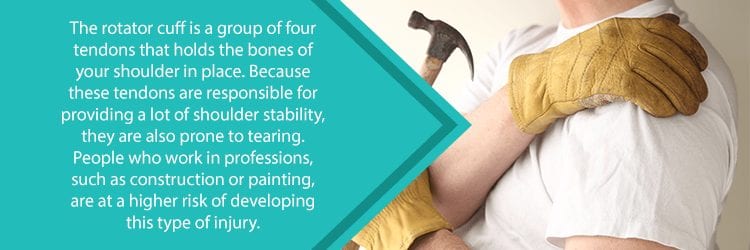
Frozen Shoulder
A sheathing of connective tissues, known as the shoulder capsule, binds the bones, tendons, and ligaments of the shoulder. When this capsule thickens and tightens around the shoulder joint, it causes pain, stiffness, and a decreased range of motion.
This condition, also known as adhesive capsulitis, is more likely to occur in older people or those who have experienced prolonged immobility of the shoulder joint due to a broken arm, rotator cuff injury, previous shoulder surgery, or stroke.
In many cases, conservative treatments can reverse this condition. In fact, arthroscopy may improve more severe cases by loosening the contracted tissue of the capsule. During the procedure, a surgeon may also opt to remove scar tissue or any other adhesions inside the shoulder joint. Aggressive physical therapy is usually required after this procedure to restore range of motion.
SLAP Tear
A SLAP tear is an injury to the ring of cartilage known as the labrum. SLAP stands for Superior Labrum Anterior and Posterior. A SLAP injury occurs where the biceps tendon attaches to the labrum. As the name suggests, the tear can occur in the front or back of this area.
A SLAP tear is common when someone uses repetitive shoulder motions or is involved in an acute trauma such as a fall or car accident.
Arthroscopy is the most common surgical technique for treating this condition. Since there are several types of SLAP tears, your doctor will use an arthroscopy to determine the best way to repair the area. Usually referred to as labral tear repair, this technique may involve removing the torn part of the labrum or reattaching it with sutures. In some cases, the surgeon will have to cut away a portion of the biceps tendon.
Shoulder Bursitis
When the fluid-filled sac of the shoulder becomes inflamed, it causes a condition known as shoulder bursitis. Bursitis can lead to intense shoulder pain, as well as swelling or reduced range of motion.
This condition commonly affects those who use repetitive shoulder movements or leaning postures that apply pressure to the elbows for long periods of time. Rheumatoid arthritis, diabetes, and gout may also play a role.
If conservative shoulder bursitis treatments have not helped, then your surgeon may use arthroscopic surgery to drain the sac. In some cases, a bursectomy may be required to remove the inflamed bursa.
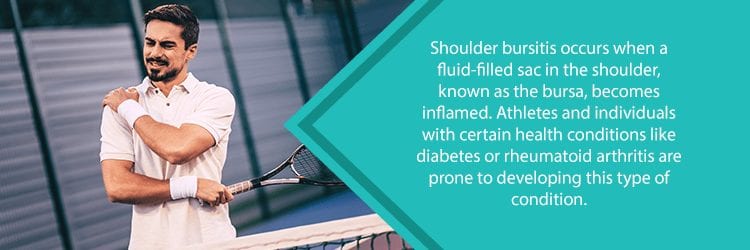
Shoulder Bone Spurs
A bone spur is an abnormal overgrowth that extends from a bone. Like osteophytes elsewhere in the body, bone spurs may rub against nerves or other surrounding tissues, causing inflammation and pain. In addition, one may feel weakness, tingling, or numbness in the shoulder joint.
Those with poor posture or diet, osteoarthritis, or who apply repetitive stress to the shoulder joint are at a heightened risk of developing bone spurs. If conservative treatments, like lifestyle and posture modifications, haven’t proved successful, then a surgeon may suggest an arthroscopy to remove the source of the problem.
Getting Treatment for Your Shoulder Problems
If you’ve tried conservative treatments for your shoulder pain with little to no success, it may be time to seek the help of trained professionals. And, NJ Spine & Orthopedic is equipped (and excited!) to help you get your life back.
By scheduling a consultation today, you’re assured that our dedicated team of orthopedic doctors will listen to your symptoms, thoroughly diagnose the problem, and discuss the most appropriate treatment options for you. If shoulder arthroscopy is advised, then our back surgeons at NJ Spine & Orthopedic will use the latest technology and equipment to ensure that you experience faster recovery times, minimal scarring, and the ability to get back to doing the things you love!

